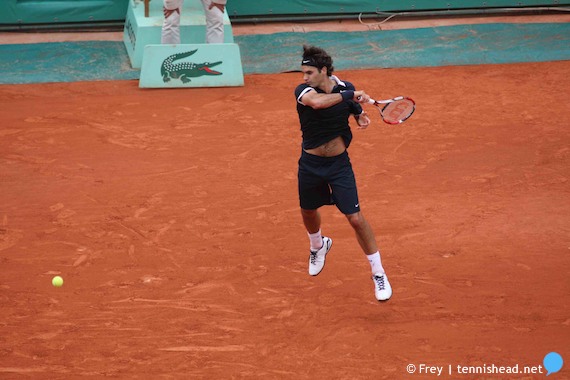kenshireen
Professional
I have played for 40 years and having watched Federer slo-motion videos saw that he kept his head down on the ball as close as humanly possible until it struck his racket.
Most of us have a tendency to follow the ball but not TRY to watch it hit the racquet head.
We tend to look up at where the ball is going as we strike it..
What I am going to say is very subtle and difficult to do because of the inclination to see where the ball is going after you strike it. But I have been doing the following lately and it has significantly increased my consistency.
I follow the ball as it strikes the opponents racket and as it is crossing the net and coming to either my BH or FH I take a snapshot of the court and decide where I am going to attempt to hit the ball (i.e. DTH, CC, Drop, etc.) Now here is the most important and difficult part (only difficult due to habit). I watch the ball hit my racket head and only after I strike it do I look up.. I agree that there is only a millisecond difference between this technique and the other way where you strike and look up almost simultaneously.
But for me I find that I hit the ball much more consistently and have fewer frame shots.
It also stops me from lifting up my shoulder when striking the ball which tends to keep the ball from flying deep.
Now, I am a 3.5 player so take that into consideration..
Ken
Most of us have a tendency to follow the ball but not TRY to watch it hit the racquet head.
We tend to look up at where the ball is going as we strike it..
What I am going to say is very subtle and difficult to do because of the inclination to see where the ball is going after you strike it. But I have been doing the following lately and it has significantly increased my consistency.
I follow the ball as it strikes the opponents racket and as it is crossing the net and coming to either my BH or FH I take a snapshot of the court and decide where I am going to attempt to hit the ball (i.e. DTH, CC, Drop, etc.) Now here is the most important and difficult part (only difficult due to habit). I watch the ball hit my racket head and only after I strike it do I look up.. I agree that there is only a millisecond difference between this technique and the other way where you strike and look up almost simultaneously.
But for me I find that I hit the ball much more consistently and have fewer frame shots.
It also stops me from lifting up my shoulder when striking the ball which tends to keep the ball from flying deep.
Now, I am a 3.5 player so take that into consideration..
Ken




